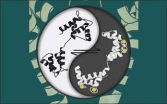Study: Prompt isolation of symptomatic patients is key to eliminating Ebola
Oct. 27, 2014 news from Annals of Internal Medicine
2014-10-27
(Press-News.org) 1. Study: Prompt isolation of symptomatic patients is key to eliminating Ebola
Isolating the sickest Ebola-infected individuals before they progress into their late phase of illness can effectively eliminate the Ebola epidemic in Liberia, according to a modeling study being published in Annals of Internal Medicine. Currently, West Africa is in the midst of the largest and deadliest Ebola epidemic ever recorded. Liberia has been especially hard-hit with more than 3,500 infections and 2,000 deaths in the past three months. Researchers developed a random transmission model to determine how disease progression and case fatality affect transmission and how patient isolation could achieve disease elimination. They found that the risk for transmitting Ebola depends on the magnitude of viral load in an infected individual and the number of people with which the infected individual interacts. Here, differentiating between survivors and non-survivors is important because survivors tend to achieve peak viral load approximately four days after symptoms develop and then viral load declines. The survivors were found to have a 32 percent probability of infecting at least one other individual during their infection period. In non-survivors, viral load is 100-fold higher than that of survivors throughout infection and does not decline after peak. Non-survivors also exhibit more severe Ebola-specific symptoms as illness progresses. Non-survivors had a 67 percent probability of transmitting Ebola to at least one other person. The researchers' model suggests that isolating the most severely ill individuals (the likely non-survivors) within four days of symptom onset could achieve disease elimination in Liberia.
INFORMATION:
Note: For a PDF, please contact Megan Hanks or Angela Collom. To interview the lead author, please contact Karen N. Peart at Karen.peart@yale.edu or 203-432-1326.
ELSE PRESS RELEASES FROM THIS DATE:
2014-10-27
COLUMBUS, Ohio – The drug erlotinib is highly effective in treating advanced-stage lung cancer patients whose tumors have a particular gene change, but when the same drug is used for patients with early-stage tumors with the same gene change, they actually fare worse than if they took nothing. A study by researchers at The Ohio State University Comprehensive Cancer Center – Arthur G. James Cancer Hospital and Richard J. Solove Research Institute (OSUCCC – James) and at Cincinnati Children's Hospital might show why.
Oncologists use erlotinib to treat ...
2014-10-27
SPOKANE, Wash.—Americans are in a world of hurt.
Nearly one in five U.S. adults are in pain most every day for spells of three months or longer, according to an analysis by Jae Kennedy, professor of health policy and administration at Washington State University Spokane. The estimated 39 million adults in persistent pain outnumber the residents of California.
Previous studies have said so much pain costs hundreds of billions of dollars a year in lost productivity and health care. And that doesn't take into account pain's psychic toll.
"A sizeable portion of American ...
2014-10-27
Chicago, October 27, 2014—The Associated Press-NORC Center for Public Affairs Research today released the results of a major new study and related reports on the recovery from Superstorm Sandy in 12 New York and New Jersey neighborhoods hard hit by the 2012 storm.
It is the second AP-NORC study that has focused on the aftermath of Superstorm Sandy, with findings that emphasize the important role social factors play in a neighborhood's resilience: the ability of people and their social systems to survive, adapt and continue moving forward after a disaster. Funding ...
2014-10-27
Researchers at McGill University have succeeded in simultaneously observing the reorganizations of atomic positions and electron distribution during the transformation of the "smart material" vanadium dioxide (VO2) from a semiconductor into a metal – in a timeframe a trillion times faster than the blink of an eye.
The results, reported Oct. 24 in Science, mark the first time that experiments have been able to distinguish changes in a material's atomic-lattice structure from the relocation of the electrons in such a blazingly fast process.
The measurements were ...
2014-10-27
Influencers trump belief that doctors adopt a new therapy by watching others use it
Surprisingly long road from FDA approval to use by doctors
New technology is like an influential colleague -- opinionated but not too bossy
Doctors need to be reminded every five to seven days
CHICAGO --- Doctors are more likely to try a new therapy when they are persuaded to do so by an influential colleague, reports a new Northwestern University study whose findings on adopting innovations also have relevance for business, education and research.
The authors have used the ...
2014-10-27
A common protein plays a different role than previously thought in the opening and closing of channels that let ions flow in and out of our cells, researchers at Johns Hopkins report. Those channels are critical to life, as having the right concentrations of sodium and calcium ions in cells enables healthy brain communication, heart contraction and many other processes. The new study reveals that a form of calmodulin long thought to be dormant actually opens these channels wide. The finding is likely to bring new insight into disorders caused by faulty control of these ...
2014-10-27
CLEVELAND -- A study published in the journal International Scholarly Research Notices (ISRN) Stroke found that overall knowledge about stroke in Uganda was poor, although knowing what to do for a stroke – go to the hospital – was good.
Researchers from higher education institutions in Uganda collaborated with those from Case Western Reserve University and University Hospitals Case Medical Center to assess residents' knowledge of stroke symptoms and treatment options. To date, public perception and level of knowledge of stroke warning signs and risk factors ...
2014-10-27
Tropical Cyclone 04A continues to intensify and had been renamed Tropical Cyclone Nilofar when NASA's Aqua satellite passed overhead on Oct. 27.
The MODIS instrument aboard Aqua captured a visible image of Nilofar that showed a ring of strong thunderstorms around the center of circulation and bands of thunderstorms wrapping into the low-level center from the east and west.
Nilofar attained hurricane strength on Oct. 27, when maximum sustained winds were near 75 knots (86 mph/139 kph) at 1500 UTC (11 a.m. EDT). Nilofar was centered near 15.2 north latitude and 62.2 east ...
2014-10-27
The type of sound processing that modern hearings aids provide to make speech more understandable for wearers may also make music enjoyment more difficult, according to a new study by the University of Colorado Boulder.
The findings, published in the journal Ear and Hearing, suggest that less sophisticated hearing aids might actually be more compatible with listening to music, especially recorded music that has itself been processed to change the way it sounds.
"Hearing aids have gotten very advanced at processing sounds to make speech more understandable," said Naomi ...
2014-10-27
The uncontrolled growth of cancer cells arises from their ability to hijack the cell's normal growth program and checkpoints. Usually after therapy, a second cancer-signaling pathway will open after the primary one shuts down — creating an ingenious escape route for the cancer cell to survive. The answer, say Case Western Reserve researchers, is to anticipate and block that back-up track by prescribing two drugs from the start. The results of the project, led by Ruth Keri, PhD, Professor and Vice Chair Department of Pharmacology, and Associate Director for Basic Research ...
LAST 30 PRESS RELEASES:
[Press-News.org] Study: Prompt isolation of symptomatic patients is key to eliminating Ebola
Oct. 27, 2014 news from Annals of Internal Medicine



